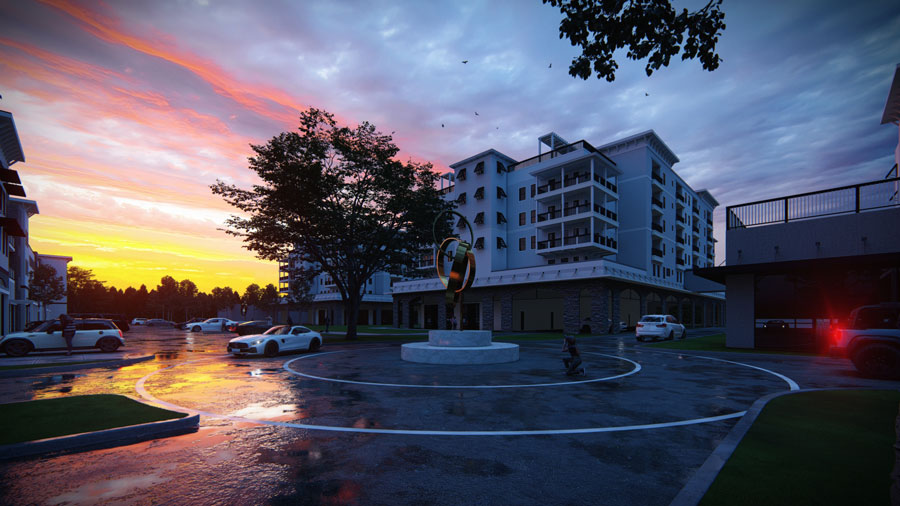
Times are evolving, and jurisdictional zoning and building codes are changing, especially within the residential & commercial market segments. Building and zoning codes were previously considered technical guidelines for safety and legal compliance; however, the process is now becoming more strategic to reduce costs to the public sector and property owners. Besides the shifting approach, code compliance can be challenging with multiple jurisdictional levels that include the International Building Code, the state building code where applicable, the county or city building code, and deed-restricted design requirements for a property.
It is imperative to use a designer with knowledge of multiple jurisdictional requirements to save on pre-construction costs for builders & developers. The Monta Consulting & Design team understands the importance of enforcing jurisdictional codes and creating product lines that meet code requirements and satisfy the community’s vision. In this article, we will share how and why jurisdictional regulations are changing and how they affect industry and product development.
The Role of Jurisdictional Code Requirements
A jurisdiction is defined by a physical boundary such as a country, province, state, county, city, town, or district and the government’s ability to make legal decisions and judgments. As previously stated, there are often multiple “layers” of code to navigate, as each area has the legal authority to create regulations according to its tax district. There are many ways in which codes are legally developed, including:
· The state legislature enacts legislation regarding code adoption, which may be a model code with or without modifications to model codes.
· State legislative action empowers a council working with a governmental body to develop and maintain the building code.
· State legislative action empowers local jurisdictions to develop and maintain building codes.
The first building codes were written to protect citizens from fire in the early settlement days. However, zoning ordinances did not come into play until the early 1900’s to protect residents from the environmental impact of the Industrial Revolution. While the purpose and intent of zoning and building codes is to provide safety to citizens, the approach is much more complex than it once was. Today, jurisdictions are utilizing more strategy in code development and implementation to reduce the financial burden of the taxpayer while resulting in higher overall tax revenue to create a higher quality of life. The philosophy is changing the way builders and developers design and construct successful projects and is causing many jurisdictions to write new codes and comprehensive plans.
Developing and sustaining a building code is a costly process, with great potential for the regulations to become out of date quickly. When creating or changing codes, each jurisdiction must carry the burden of writing, editing, and distributing them. This inconsistent practice leads to increased difficulty for designers and builders to interpret each unique code constraint. Sometimes codes between overlapping jurisdictions may even conflict with one another.
Why Do Zoning & Building Codes Change?
Jurisdictional codes change for many reasons, including the evolution of safety, technology, and construction materials. In many cases, regulations change due to litigation regarding construction outcomes that negatively impact the quality of life or safety of citizens. More recently, code changes have been prompted by the demand for economic sustainability and quality of life by tax-paying citizens within a community.
The demand is causing a shift in the approach to code and zoning changes. Public officials and residents alike are looking to the principles of new urbanism for planning and zoning solutions, which include increasing density, mixed-use developments, connectivity for diverse modes of transportation, walkability, and green design. For more details on New Urbanism, check out our approach to master planning here: https://montaconsulting.com/blog/master-planning-with-new-urbanism/
In addition to a new approach to zoning ordinances, there is also an evolving approach to building codes. To cultivate walkability, connectivity, and other New Urbanism principles, regulations for garage placement, porch size, and parking are now commonplace. To learn more about our product development for permit approval, click here. https://montaconsulting.com/blog/permit-approval/

How to Navigate Building Code Changes
Due to the complexity of zoning and building codes, it is strongly recommended that a property owner, builder, or developer solicit the expertise of attorneys, designers, and engineers. The Monta Consulting & Design team brings expertise to design & engineer projects for approval upon first submission. In addition, our team is able to utilize a network of attorneys when necessary or is able to work with the preferred attorney of the client. Benefits of completing the pre-construction process with a professional team like MCD include:
A Decrease in Plan Rejections
Increase Returns on Investment
Efficient Constructability
Improved Consumer Marketability
Although it may seem cumbersome to plan with professionals, the alternative is cost-prohibited. Developers and builders incur the most financial risk when it comes to building communities. The expense starts to accumulate well before construction, many times into the millions. In cases where a project is never constructed due to a lack of public approval and consumer buy-in, the developer assumes the cost and has no chance of a return on investment.
Monta Consulting & Design intentionally stays informed about evolving trends and consumer patterns to produce competitive communities and product lines for builders and developers. Our in-depth knowledge mitigates the risks mentioned above for developers and builders. With over 30 years of experience providing builders, developers, and homeowners, MCD can achieve the desired results for the public and private sectors. Combined with our local jurisdiction connections and understanding, MCD produces designs that receive permit approvals and faster turnaround times to lower overall costs throughout the entire construction process!
Monta Consulting & Design understands the ins and outs of the jurisdictional codes and the approval process. Don’t navigate pre-construction alone and contact our team of experts today: Monta Consulting & Design – Architecture & Engineering




